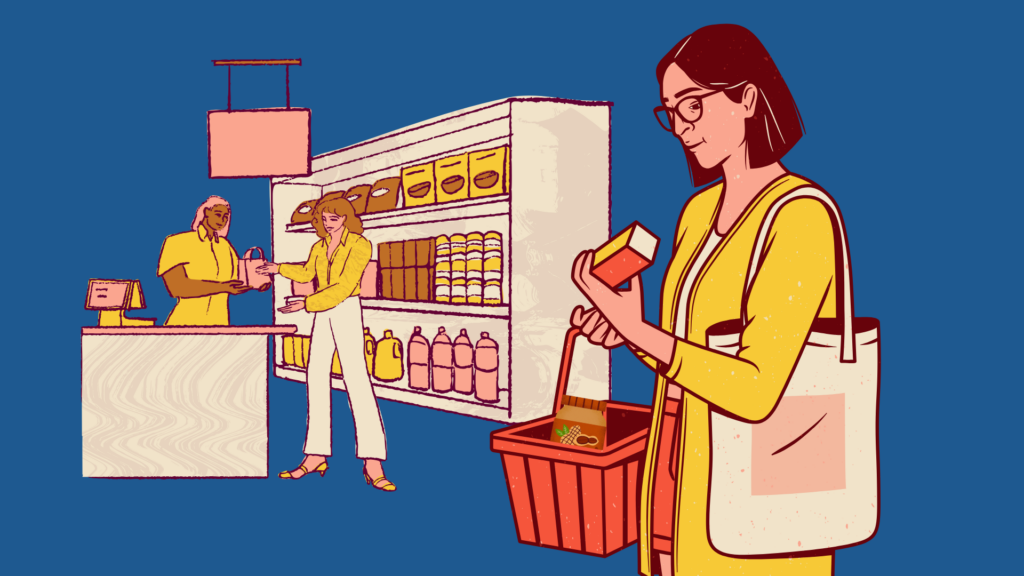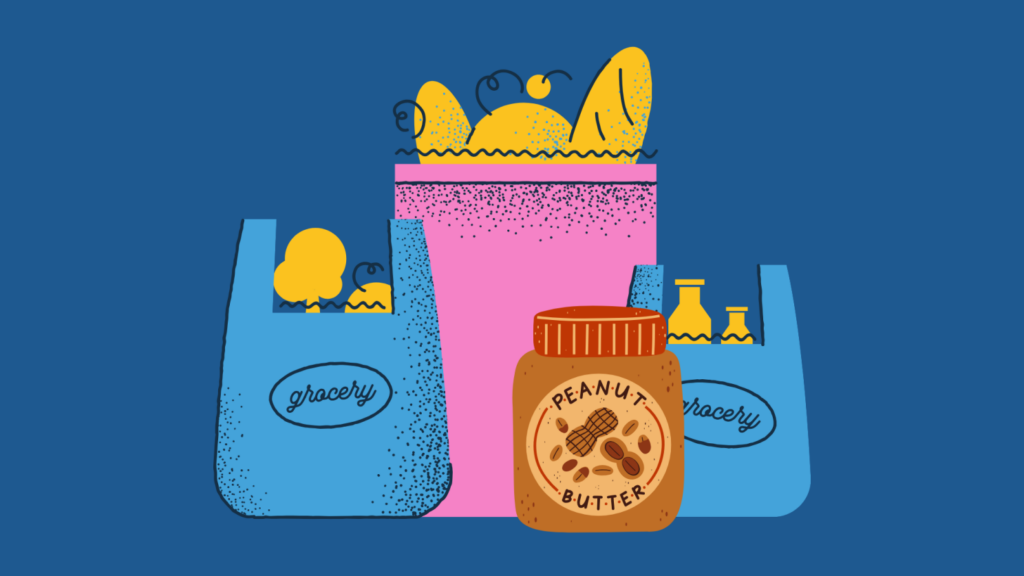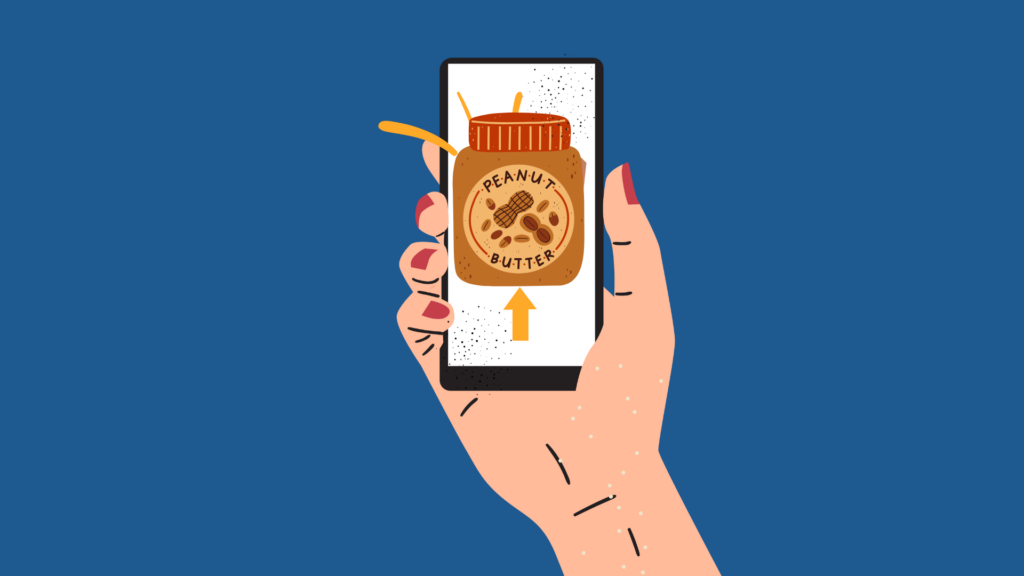
Imagine Sarah, a thirty-something graphic designer, standing in a Loblaws aisle in Toronto in 2025. The fluorescent lights hum overhead, casting a sterile glow on her as she cradles a jar of peanut butter. It’s not just any jar—this one’s tariff-free, roasted from Canadian peanuts in a small Ontario plant, and it’s practically serenading her through a sleek kiosk screen.
The display flashes a recipe for spicy peanut noodles; She taps her phone against a QR code, and a coupon pings—$1 off, straight from the brand. Sarah smiles, unaware she’s the linchpin in a high-stakes pivot for Canada’s consumer packaged goods (CPG) brands. They’re scrambling to stay relevant in a digital world that’s as slippery as a freshly iced rink, and their playbook is evolving fast.

Omnichannel Evolution Amid Economic Strain
Canada’s CPG industry once moved like molasses—new flavors or bigger boxes trickled in over decades. Then the pandemic hit, and shoppers like Sarah fled to e-commerce overnight, yanking brands into the digital age. By April 2025, the stakes are higher. Canada’s retaliatory tariffs—25% on $30 billion of U.S. goods since March 4, plus $29.8 billion more by March 13—slam imports like U.S.-grown almonds or Georgia pecans, staples for snacks and spreads.
Inflation’s relentless grind means a $100 grocery haul from 2022 now costs $117, and Statistics Canada reports food prices up 3.2% year-over-year, outpacing wage growth. Cocoa withers under climate stress, supply chains tangle in Red Sea shipping snarls—yet over 70% of Canadian shoppers, Sarah included, weave digital and physical seamlessly. Kiosks in Sobeys and apps from Metro pitch tariff-free, Prairie-made oats or Quebec maple syrup, a digital lifeline in a market where 40% of consumers now eye private labels like President’s Choice to stretch their dollars.
Storytelling in a Cost-Conscious Era
Sarah’s not just grabbing peanut butter—she’s stepping into a narrative. With tariffs and inflation pushing food costs up 2% short-term, per Yale’s Budget Lab, Canadians are picky, their wallets bruised. In-store, Loblaws and Walmart kiosks don’t just sell—they story tell. Picture it: a touchscreen glowing beside the nut butters, showing a farmer in Simcoe County harvesting peanuts, then a recipe folding Sarah’s jar into her weeknight rush. “Progressive Grocer” calls this a sharp edge—personal, profitable, a story that lands.
Her QR code ties it home, dodging the bite of pricier U.S. imports and tapping a swelling “Buy Canadian” pride—Loblaw Companies Ltd. says local sourcing jumped 15% since tariffs kicked in. Attention’s a wild card—8 seconds, a 2015 Microsoft study claims, less than the nine-second attention span of your average goldfish. Dr. Gemma Briggs a Cognitive Psychologist with Society of Applied Research in Memory and Cognition counters its fluidity: hours for a binge-watch to a blink online. Here, in the aisle, 8 seconds still holds when the tale’s worth hearing.
Consider Loblaws’ media arm, now a $100-million juggernaut beaming ads to pharmacy waiters, or Metro’s Moi app syncing carts with Alexa. Canadian CPG brands—think Maple Leaf Foods or Catelli—are waking up to a truth: they can’t go it alone. Media agencies, those wizards of reach and resonance, are their new best friends. Why? Agencies bring AI-driven precision, slicing through data to target Sarah’s stretched budget or her neighbor’s organic splurge. Media agencies have the tools—programmatic ad platforms, retail media networks—and the strategies and know-how to dodge a saturated market where 89% of Canadians start buying with a search engine. In 2025, Canadian CPG execs, only 37% of whom prioritize AI (lagging the 84% in other sectors), are leaning on these partners to re-strategize, bridging tariffs and tight dollars with digital finesse.

Digital Acceleration Meets Economic Realities
A Saturday afternoon in 2025: shopping carts rattle across the parking lot of a Canadian Tire in suburban Calgary, a ritual Google’s latest data still clocks as peak grocery time. But something’s shifting beneath the clatter—apps and voice assistants like Alexa are quietly changing how Sarah, and thousands like her, fill those carts. Money’s tight in Canada these days: inflation has jacked up prices so a loaf of bread stings more than it did three years ago, and strict dairy quotas—rules capping how much milk farmers can produce—keep cheese and butter stubbornly pricey.
Yet here’s Sarah, part of the 20% of 18-34-year-olds (eMarketer’s count) who lean on smart speakers to shop. “Alexa, add pasta to my cart,” she says over her morning coffee, and brands like Kraft or Catelli scramble to be the one she grabs—especially since U.S. rivals now carry the extra weight of tariffs.
Behind the scenes, artificial intelligence is playing matchmaker, sorting Canadians into two camps: the middle-income households now counting pennies and the well-off city dwellers still splurging on organic quinoa. It’s a critical move—36% of shoppers, per a 2025 NielsenIQ survey, are drifting toward cheaper store brands like No Name or Great Value, lured by savings as the Canadian dollar limps along at 73 U.S. cents. Digital isn’t just a shiny toy here—it’s a lifeline, helping brands stay in Sarah’s ear and on her list when every dollar feels like it’s pulling double duty.
In-Store Digital Integration
Step into a Halifax Walmart, and screens flicker above the deli counter—ads for tariff-free Nova Scotia fish or Ontario apples. A 2025 study pegs 82% of choices in-store, 18% sparked by promos, even as labor costs climb with a 4.1% unemployment rate driving wages up. Attention’s fleeting—Gen Z ditches TikTok ads in 1.3 seconds, ProfileTree’s 2024 take—but in-store, it lingers when a deal flashes. Loblaws’ media arm, now a $100-million business, beams ads to shoppers waiting for prescriptions, weaving digital into the physical grind of a nation where 60% of CPG sales still flow through brick-and-mortar, per Canadian Grocer.

The Omnichannel Imperative
Sarah’s world is omnichannel—70% of Canadians flit between apps and aisles. QR codes, reborn in the pandemic’s contactless haze, bridge it; 28% of 34-44-year-olds lead, QR Tiger finds, but retirees in Regina scan too. Amazon Fresh hasn’t cracked Canada yet—tariffs and logistics stall it—but Metro’s Moi app mimics the trick, scanning carts and nudging tariff-free picks via Alexa. Its thrift meets tech: a Vancouver mom saves $2 on local jam, a lifeline when private labels loom and the Fraser Institute warns of a 5% grocery cost hike if trade talks sour further.
Navigating the Future
The ad landscape’s a kaleidoscope in 2025 Canada. Retail media’s king—Loblaws’ $100-million media arm and Sobeys’ deals with influencers on TikTok dwarf old TV spots. Social ad growth surges 15.1% yearly, eMarketer says, as Sarah’s Instagram feed trumps flyers. Voice shopping’s creeping—smart speakers in a third of homes. Media agencies are sharpening the blade, storytelling spins the yarn and digital smarts meet gritty resolve.
Sarah’s peanut butter isn’t a jar—it’s a signal, a story of a nation and an industry rewiring itself. As she strides out of supermarket, jar tucked in her reusable bag, she’s the proof: CPG brands are not just surviving Canada’s stormy now—they’re rewriting it. The question isn’t whether brads have thought of partnering or pivoting—it’s how fast they can skate to keep Sarah, and Canada, hooked.